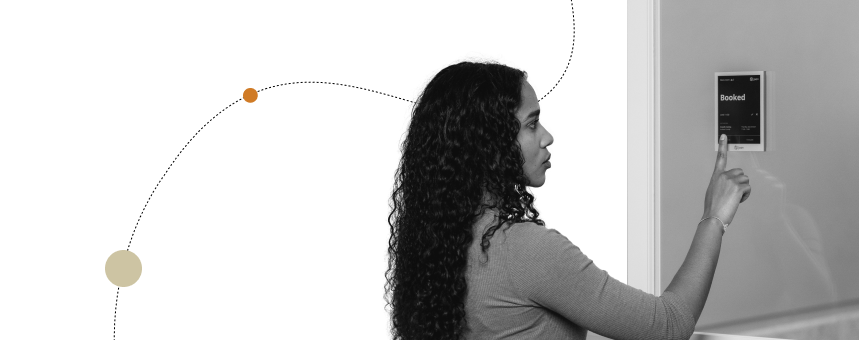



Frank has a recurring Monday standup in Room A. Sarah’s team needs that exact space for client meetings. Meanwhile, Room B sits empty because everyone assumes it’s taken. Room C is perpetually booked by people who never show up. Down the hall, the marketing team crowds around a desk because they can’t find a free space to brainstorm.
Sound familiar?
When done right,meeting room utilization transforms from a daily headache into a seamless part of work life. But first, we need to understand what’s really happening in those spaces.
Meeting room utilization measures how effectively your office spaces are used, not just how often they appear as “booked” in your calendar.
Real meeting room utilization tracks several key factors:
Measuring these metrics helps organizations spot inefficiencies in their space management. For example, a twelve-person conference room used daily by three people signals poor space allocation. Similarly, a one-hour booking that ends after twenty minutes represents unused capacity that other teams could have leveraged.
The most notorious culprit in poor room utilization is the “ghost meeting” – those calendar events that live on forever, booking rooms week after week, even though the project ended months ago.
Another common issue is the size mismatch problem. We’ve all seen it: three people huddled in a 20-person conference room while a team of eight squeezes into a four-person space down the hall. This mismatch between room size and group needs creates artificial scarcity and frustration across the organization.
Then there’s the “just in case” syndrome, where team members book rooms as a backup plan, often reserving more time than necessary or multiple rooms for flexibility. While the intention is good, this practice can wreak havoc on overall space availability and create a ripple effect of booking issues throughout the office.

Making sense of meeting room data requires tracking both quantitative and qualitative aspects of space usage. Let’s break down what you should measure and why it matters for your workplace optimization strategy.
Raw numbers only tell part of the story. The real value comes from analyzing these metrics to drive meaningful improvements in your workspace. Joan’s analytics dashboard, for example, transforms complex utilization data into actionable insights that help you:
Meeting room utilization isn’t a set-and-forget metric. Schedule regular reviews of your data to:

Bright, well-ventilated rooms are essential for keeping energy levels up and ensuring everyone can focus without squinting or sweating. And let’s not forget about soundproofing. A well-insulated room minimizes noise distractions and ensures that conversations remain clear and productive.
The right technology makes all the difference in managing meeting spaces effectively. Modern platforms provide real-time visibility into room availability and usage.
For instance, Joan devices show immediate status updates, helping teams find available spaces quickly while eliminating double-bookings. Joan Room Booking also seamlessly integrates with existing calendar systems, making adoption painless for end users while providing powerful insights for office managers.
Meeting room utilization doesn’t have to be a constant source of workplace friction. By implementing the right combination of policies, technology, and practices, you can create a more efficient and productive office environment. Begin with understanding your current utilization patterns, then gradually implement improvements based on actual usage data and user feedback.
Ready to transform your meeting room utilization? Explore smart booking solutions like Joan Room that can help you understand and optimize your space usage today.